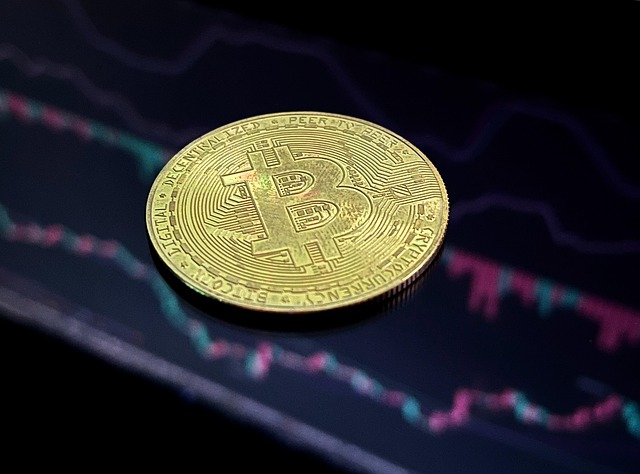Retail investors will dominate the crypto markets
Opinion by: Hatu Sheikh, founder of Coin TerminalCrypto began its journey with Bitcoin (BTC) — the epitome of decentralization — promising open access and equitable distribution of financial resources. It evolved into starkly different territories, where lucrative market opportunities are often inaccessible for retail investors.Wealthy individuals, high-net-worth family offices, company insiders and venture capitalists secure early access to prime crypto deals. Retailers are left in the lurch as their late entry leads to higher market risks and limited profitability.The table is turning, mainly with the rise of real-world asset (RWA) tokenization and a decisive repudiation of venture capital-backed tokens. Crypto is no longer a niche asset class for institutional investors — retail users are now actively shaping the future of finance.Crypto has a retail-institutional divideRetail investors have long stayed away from the crypto market. Analyzing the Bitcoin wallet activities of retail tokenholders demonstrates this.According to Glassnode, Bitcoin retail spend volumes of user wallets holding less than 0.1 BTC have dropped by 48% since November 2024. A crypto commentator has corroborated the data, showing retail interest reached a three-year low.Institutional investors like Metaplanet, Strategy and Intesa Sanpaolo have recently increased their Bitcoin holdings, taking advantage of BTC’s price drop. Simultaneously, large Bitcoin holders or crypto whales have accumulated over 39,620 BTC worth $3.79 billion in a single day.Matt Hougan, chief investment officer at Bitwise, said, “There is an absolutely massive disconnect between retail and professional sentiment in crypto right now.” The data suggests that retail sentiment is bearish while professional investors remain bullish, almost like two parallel worlds.The expanding adoption of BTC reserves by corporations and institutional demand for Bitcoin futures has led to shrinking retail investors. The Chicago Mercantile Exchange (CME) controls 85% of the monthly futures market, while crypto exchanges control retail-led perpetual contracts.CME’s open interest in monthly BTC futures offers hedge funds and investment banks exposure to BTC and liquidity access. It also indicates, however, a diminishing influence of retail investors’ participation in Bitcoin’s price discovery.The market structurally restricts retail investors’ access to capital reserves, denying them early-stage opportunities in financial markets. The psychological “unit bias” adds to the problem as retailers cannot own a complete unit of assets like Bitcoin.Recent: Crypto shows how powerful tokenizing private stocks would beAs governments contemplate the formation of strategic Bitcoin reserves, they risk being locked in central bank cold wallets. For optimal utilization, it’s essential to keep Bitcoin accessible to retail investors through open reserves.Despite such constricted market opportunities, the crypto industry offers innovative products like asset tokenization and memecoins to democratize access for retail investors.Retail investors are reclaiming cryptoSometimes, the best way to achieve financial inclusion is to remove complexities and make investing fun and relatable. Memecoins have done that successfully, leveraging speculation as a utility to make a statement against low-float-high-fully diluted valuation coins backed by VCs. That’s the reason retail investors are buying memecoins in such large numbers.Although memecoins are subject to severe market volatily, they continue to dominate retail speculation. Nicolai Søndergaard, a research analyst at Nansen, thinks the altcoin season is yet to come because memecoins have topped investor mindshare and capital allocation. The memecoin phenomenon shows the power of ordinary people to monetize virality and harness mimetic desire through collective community-led wealth generation. But more importantly, it shows retail investors’ rejection of VC-led token pumps that deny fair entry to high-value token launches.Memecoins also give tokenholders a sense of belonging to facilitate bonding over shared values and culture. Thus, when US President Donald Trump launched his memecoin, 42% of investors were first-time buyers, signaling memecoins’ potential to onboard retailers.Beyond speculative memecoin trading, retail investors adopt tokenized real-world assets to hedge against uncertain market conditions. The RWA tokenization market has recently surpassed $17 billion, enhancing retail investor accessibility and market opportunities through improved liquidity and fractional ownership.Retailers and small investors can now participate in tokenized capital markets, previously reserved for institutions and wealthy individuals. Thus, tokenization is a democratic and inclusive market strategy to help new investors access the financial system without facing liquidity challenges.Mastercard recently published a white paper explaining how RWA tokenization offers significant socio-economic benefits to people from emerging economies, such as Latin America. In developing economies, tokenization resolves the trust deficit by enabling transparent ownership tracking for seamless asset transfers.Asset tokenization helps retail investors participate in DeFi markets by improving capital efficiency. A PricewaterhouseCoopers report shows tokenization benefits buyers and sellers in the opaque $1.5-trillion private credit market through fractionalized lending and borrowing.Amid turbulent market conditions, institutional investors with abundant capital reserves have the luxury of continuing to accumulate Bitcoin and other altcoins. However, retail investors with a fixed capital supply must find asset classes with the lowest entry barriers.With the crypto industry providing diversified investment options and innovative products, retailers now have the freedom to invest in their preferred assets. It’s finally time for retail investors to come onchain.Opinion by: Hatu Sheikh, founder of Coin Terminal.This article is for general information purposes and is not intended to be and should not be taken as legal or investment advice. The views, thoughts, and opinions expressed here are the author’s alone and do not necessarily reflect or represent the views and opinions of Cointelegraph.
Infini takes legal action after $50 million stablecoin exploit
Infini, a stablecoin payment platform, has recently filed a lawsuit in Hong Kong against a developer and several unidentified individuals for their alleged involvement in a hack that resulted in the loss of nearly $50 million in crypto assets. The platform, which offers a stablecoin called USDC, traced the stolen funds to the defendants and has taken legal action to recover the assets.
The attack, which occurred on February 24, was carried out by a hacker who goes by the name Chen Shanxuan and three other unidentified individuals. Infini has sent an onchain message to the attacker, notifying them of the legal action being taken against them. The Hong Kong court has also issued an injunction order and a writ of summons to the defendants, requiring them to attend a hearing.
Infini has stated that the 49.5 million USDC stolen from their platform are subject to an ongoing legal dispute and are considered contentious assets. This means that any subsequent holders of the stolen crypto assets cannot claim to be bona fide purchasers without notice of the dispute.
In an attempt to recover the stolen funds, Infini has offered a 20% bounty to the hackers responsible for the attack. The platform has also gathered IP and device information about the attackers and is constantly monitoring the addresses involved. However, despite the warnings, the attacker has not returned any of the funds.
The Infini hack came just days after Bybit, another crypto platform, suffered the largest recorded losses in a hack, with $1.4 billion in crypto assets stolen. According to cybersecurity experts, the timing of the Infini attack was not a coincidence, as the hackers saw an opportunity while everyone was focused on the Bybit hack.
This incident highlights the need for stronger security measures in the crypto industry. As more and more people turn to cryptocurrencies, it is crucial for platforms to prioritize the safety of their users’ assets. In the meantime, Infini and other affected platforms will continue to take legal action to recover the stolen funds and hold the perpetrators accountable.
RSI breaks 4-month downtrend: 5 Things to know in Bitcoin this week
Bitcoin (BTC) heads into the end of Q1 near two-week highs as trader sentiment diverges from improving technicals.Bitcoin market participants are positioned for a fresh BTC price dip, which could even form new multimonth lows.PCE week coincides with the last full trading week of March, and risk assets are showing a hint of optimism.When it comes to BTC price strength, RSI is increasingly demanding bullish continuation.Bitcoin’s short-term holders are under pressure amid serious unrealized losses.Stablecoin stocks on Binance hit record highs in what research hopes is a positive signal for investor confidence.Bitcoin traders see downside reversal nextBitcoin is nearing a rematch with two-week highs as the week gets underway, data from Cointelegraph Markets Pro and TradingView shows.BTC/USD 1-hour chart. Source: Cointelegraph/TradingViewAmong traders, however, the mood remains firmly cautious.Bulls have a lot to do in order to spark a reliable uptrend, they warn, and despite being up nearly 15% versus its multimonth lows from earlier this month, BTC/USD may well see a fresh drop.“Market sentiment has been restored after hitting the short liquidations at $87.1k. Now, it could be a good opportunity for the MM to shake out the market again,” popular trader CrypNuevo wrote in his latest X analysis. “We may see a pullback from here over the next 1-2 weeks, a retrace of this recovery.”BTC liquidity chart. Source: CrypNuevo/XCrypNuevo eyed downside liquidity nearer $80,000 as a potentially lucrative target, advising followers to “mind the risk.”BTC/USDT 1-hour chart. Source: CrypNuevo/XFellow trading account HTL-NL described the near-term scenario as “not looking good” for bulls, eyeing $90,000 as a ceiling before a reversal kicks in.Even among its more ardent supporters, the specter of the mid-$70,000 lingers. Arthur Hayes, former CEO of crypto exchange BitMEX, argues that BTC/USD could even advance to new all-time highs of $110,000 before crashing 30%.“Again I still think we go lower before we make a run back to 88-90k resistance retest,” popular trader Roman meanwhile added on short timeframes.Earlier, Cointelegraph reported on several key support trend lines in need of a reclaim as part of any BTC price recovery.These included the 200-day simple and exponential moving averages, currently at $85,050 and $85,500, respectively.BTC/USD 1-day chart with 200 SMA, 200 EMA. Source: Cointelegraph/TradingViewPCE week comes in the shadow of tariffsThe last full trading week of Q1 2025 gets underway with a hint of relief for risk assets as stocks end a four-week losing streak.A wild ride for equities since the year began is finally coming to a close, and with it an even more volatile period for Bitcoin and crypto.That said, more surprises could come before the quarterly candle close.March 28 is the main date in traders’ diaries this week, hosting the February print of the US Personal Consumption Expenditures (PCE) index. Known to be the Federal Reserve’s “preferred” inflation gauge, PCE came in below expectations last month, with the upcoming numbers broadly expected to be identical.Citing the Fed’s own estimates, financial market research firm Bespoke saw positive developments for risk-on sentiment developing.“The Fed’s inflation model currently estimates that headline and core for both CPI and PCE will all have 2-handles by March,” it observed last week. “Makes room for further cuts.”Fed target rate probabilities for June FOMC meeting. Source: CME GroupThe latest estimates from CME Group’s FedWatch Tool meanwhile show market odds for interest rate cuts unchanged, with the June meeting of the Federal Open Market Committee (FOMC) as the likely timeframe for financial conditions to ease.The US government’s reciprocal tariff arrangement, due to go live on April 2, could temper any optimism.At a press conference following the latest FOMC meeting last week, Fed Chair Jerome Powell cited tariffs as a “driving factor” in increasing inflation expectations.“You may have seen that goods inflation moved up pretty significantly in the first two months of the year. Trying to track that back to actual tariff increases, given what was tariff and what was not, very, very challenging. So, some of it,” he said. “The answer is clearly some of it, a good part of it is coming from tariffs.”RSI signals tease key BTC price breakoutsWhen it comes to early bull market continuation signals, Bitcoin is currently enjoying several classics at once.These all hinge on the relative strength index (RSI), a key momentum indicator which is in the process of breaking out across both long and short timeframes.Market observers are keenly eyeing bullish divergences on RSI, which on weekly timeframes is abandoning a downtrend in place ever since November 2024.Originally spotted by popular trader and analyst Rekt Capital last week, the process is continuing, with RSI seeking to confirm the downtrend line as support before heading higher.“The Daily RSI is showcasing early signs of retesting the Downtrend dating back to November 2024 as new support,” Rekt Capital wrote in his latest update on the topic.BTC/USD 1-day chart with RSI data. Source: Rekt Capital/XAs reported by fellow analyst Matthew Hyland, BTC/USD has now confirmed a bullish divergence on the weekly chart for the first time since September last year.BTC/USD 1-week chart with RSI data. Source: Matthew Hyland/XDaily RSI meanwhile measured 51.4 at the time of writing — above its key midpoint and fighting to hit new two-month highs.Bitcoin speculators face a profit waiting gameBitcoin’s short-term holders (STHs) — newcomer entities hodling coins for up to six months — are “under increasing pressure,” onchain analytics firm Glassnode warns.In its latest analysis on X, Glassnode showed substantial unrealized losses among the STH cohort, one traditionally more sensitive to short-term BTC price volatility.“Unrealized losses have surged, pushing many STH coins underwater, nearing the +2σ threshold,” it noted alongside a chart which applies standard deviation to the performance of their holdings.Bitcoin STH unrealized loss. Source: Glassnode/XAs Cointelegraph reported, recent trips to multi-month lows for BTC/USD have been accompanied by significant panic selling by these newer investors, with many choosing to exit their positions at a loss.Zooming out, however, Glassnode observes that compared to historical extremes, current loss-making sales barely compete.“The rolling 30-day realized loss for Bitcoin’s STHs has reached $7B, marking the largest sustained loss event of this cycle,” it continued. “However, this remains well below prior capitulation events, such as the $19.8B and $20.7B losses in 2021-22.”Bitcoin STH rolling 30-day realized loss. Source: Glassnode/XStablecoin reserves offer glimmer of hopeFurther data meanwhile points to a return of investor confidence on largest crypto exchange Binance.Related: Bitcoin price recovery sets base for TON, AVAX, NEAR, OKB to rallyAs highlighted by onchain analytics platform CryptoQuant, the total ERC-20 standard stablecoin reserves on the exchange hit new all-time highs above $31.8 billion on March 21.“Binance remains the exchange with the highest trading volumes, making this a significant development,” contributor Darkfost wrote in one of its “Quicktake” blog posts on March 23.“There are several factors behind this increase, but the most important one is likely that investors on Binance remain confident and are preparing to enter, or re-enter, the market.”Binance ERC-20 stablecoin reserve. Source: CryptoQuantDarkfost acknowledged that Binance itself may be the source of additional liquidity as it prepares for a potential uptick in activity.“Nonetheless, seeing these stablecoins remain on Binance is generally a positive signal for the market,” he concluded.This article does not contain investment advice or recommendations. Every investment and trading move involves risk, and readers should conduct their own research when making a decision.
ETH may reclaim $2.2K ‘macro range’ amid growing whale accumulation
Ether, the second-largest cryptocurrency by market capitalization, has been facing a downward trend for the past three months. After reaching an all-time high of over $4,100 on December 16, 2024, Ether’s price has dropped by over 51%, according to data from TradingView.
To reverse this downtrend, Ether needs to reclaim the “macro range” above $2,200, as noted by popular crypto analyst Rekt Capital in a recent post. This range, which is marked in black on the monthly chart, has been a key level for Ether’s price in the past.
However, despite positive regulatory developments and a surge in open interest for Ether futures, the cryptocurrency has been unable to gain significant momentum. This is due to global macroeconomic concerns, which are expected to continue until at least the beginning of April.
But there is hope for Ether’s price as large investors, or “whales,” have been accumulating the cryptocurrency. According to Nicolai Sondergaard, a research analyst at Nansen, the number of addresses with at least $100,000 worth of Ether has been increasing since the beginning of March. This suggests that these whales are confident in Ether’s long-term potential.
In fact, some analysts predict a $6,000 cycle top for Ether’s price and a $180,000 Bitcoin price by the end of 2025. This optimism is shared by investment firm VanEck, which also predicts a strong year for cryptocurrencies.
Despite short-term volatility, investors remain bullish on Ether and the overall crypto market. And with whales accumulating and positive developments in the regulatory landscape, it’s only a matter of time before Ether reclaims its “macro range” and continues its upward trajectory.
Bitcoin needs weekly close above $85k to avoid correction to $76k: analysts
Bitcoin analysts are eying the weekly close to gauge Bitcoin’s price trajectory for next week, as traditional and crypto markets are lacking direction amid a mix of global trade war fears paired with easing inflation concerns.Bitcoin’s (BTC) price may see more downside next week unless it manages to close the week above the $85,000 psychological mark, according to Ryan Lee, chief analyst at Bitget Research.“Bitcoin’s relief rally after the FOMC meeting and lower CPI readings has analysts eyeing a weekly close above $85,000, as critical for resuming upside momentum,” Lee told Cointelegraph, adding:“A close above this level could prevent a drop to $76,000 and signal strength, while $87,000 would provide even clearer bullish confirmation. Macro factors like steady rates and cooling inflation support risk assets, but the Sunday close will be decisive.”BTC/USD, 1-year chart. Source: CointelegraphBitcoin’s price has been lacking momentum, rising only 0.9% over the past week, Cointelegraph Markets Pro data shows. A disappointing weekly close risks a revisit to the previous week’s price low of $76,600.Related: Whale closes $516M 40x Bitcoin short, pockets $9.4M profit in 8 daysMarkets should “pay attention” to long-term holder accumulation: analystWhile Bitcoin may experience short-term downside, the relief rally after the Federal Open Markets Committee (FOMC) meeting was a positive sign for market participants, according to Enmanuel Cardozo, market analyst at Brickken real-world asset (RWA) tokenization platform.Instead of short-term fluctuations, investors should pay attention to long-term Bitcoin holder accumulation to gauge BTC’s trend, the analyst told Cointelegraph, adding:“Long-term holders continue to stack, as we’ve seen in on-chain data, the accumulation by these holders, quietly building since the dip is what we should be paying attention to.”Long-term holders resumed their Bitcoin accumulation at the beginning of February, buying over $21 billion worth of Bitcoin since.BTC: Total supply held by long-term holders, year-to-date chart. Source: GlassnodeThe total Bitcoin supply held by long-term holders increased by over 250,000 BTC in less than two months, from 13.1 million BTC on Feb. 11 to over 13.3 million on March 22, Glassnode data shows.Related: Trader nets $480K with 1,500x return before BNB memecoin crashes 50%BTC/USD, 1-day chart. Source: Cointelegraph/TradingViewDespite a wave of positive regulatory and crypto-specific developments, global tariff fears will continue to pressure the markets until at least April 2, according to Nicolai Sondergaard, a research analyst at Nansen.Magazine: Bitcoin’s odds of June highs, SOL’s $485M outflows, and more: Hodler’s Digest, March 2 – 8
German financial regulator prohibits sales of Ethena's USDe
The German financial regulatory authority, BaFin, has recently made a bold move by prohibiting all public sales of Ethena GmbH’s USDe token. This synthetic dollar has been deemed to violate the European Union’s MiCAR regulations, and the firm has been accused of selling unregistered securities in the region.
According to BaFin’s announcement, the firm has been ordered to freeze the reserve assets that back the token, shut down their website portal, and stop taking on new customers. In addition, the regulator has appointed a representative to monitor the situation with Ethena GmbH.
BaFin has stated that they have reasonable grounds to suspect that Ethena GmbH is selling securities in the form of sUSDe tokens without the required prospectus. These tokens are interconnected, and investors can exchange USDe tokens for sUSDe tokens. However, the ban only applies to primary sales and issuance of the token, and secondary sales will not be affected.
Despite the ban, Ethena GmbH has filed for regulatory approval under MiCA in 2024, hoping to be “grandfathered” into the existing framework. However, their application was denied by BaFin due to serious deficiencies in their business organization and a lack of compliance with the MiCA framework.
It is worth noting that there are currently around 5.4 billion Ethena tokens in circulation, but many of these were minted outside of the German jurisdiction and before MiCA took effect.
This is a developing story, and more information will be added as it becomes available. In the meantime, the regulator has temporarily blocked redemption via the Ethena GmbH exchange, but secondary sales of the token will still be allowed.
It is clear that BaFin is taking a strong stance against unregistered securities and is closely monitoring the situation with Ethena GmbH. This serves as a reminder to all companies operating in the financial sector to ensure compliance with regulations to avoid facing similar consequences.
We will continue to follow this story and provide updates as they become available. Stay tuned for more information on this developing situation.
Bitcoin price thaws after Trump statement — Trader says ‘stay nimble and cashed up’
Bitcoin (BTC) price rallied to an intraday high of $87,453 in the early hours of the NY trading session but quickly retraced its gains to $83,655 shortly after US President Donald Trump made a video appearance at the Digital Asset Summit in New York. Prior to the video statement, rumors circulated on X, suggesting that President Trump would announce zero capital gains taxes on certain cryptocurrencies or issue a favorable statement about the US strategic Bitcoin reserve. To the disappointment of some traders, neither rumor proved to be true, and Trump simply doubled down on his promise not to sell Bitcoin that has been confiscated by the government, and he called for Congress to enact clear stablecoin legislation as soon as possible. The most positive statement made by President Trump was his restated goal of making the US the leader in all things crypto. “Together, we will make America the undisputed Bitcoin superpower and the crypto capital of the world.” As is commonplace for crypto markets, traders clearly bought into the rumor that Trump would make some sort of pro-Bitcoin executive order statements, and once this was clearly not the case, they sold on the news. In an X post, chartered market technician Aksel Kibar said that there is still a chance of Bitcoin price correcting to $73,700. BTC/USD 1-day chart. Source: Aksel Kibar / X Kibar said, “Long-term chart on BTC/USD. Still looks like a pullback to the broken $73.7K. What follows from here will decide on the following several month’s price action.” Not all of Bitcoin’s recent strength is attributed to excitement over today’s Trump statement. On March 19, BTC responded positively to the release of FOMC minutes and Federal Reserve Chair Jerome Powell’s confirmation that the Fed’s quantitative tightening regime would reduce its pace and that the possibility of two interest rate cuts in 2025 remained on the table. BitMEX co-founder Arthur Hayes took a victory lap at what he described as the Fed’s admission that QT would essentially end on April 1, but he cautioned that while $77,000 may have been the Bitcoin price bottom, surprise bouts of volatility could lead to more pain in stocks and BTC. Hayes said, “JAYPOW delivered, QT basically over Apr. 1. The next thing we need to gt bulled up for realz is either SLR exemption and or a restart of QE. Was BTC $77K the bottom, prob. But stonks prob have more pain left to fully convert Jay to team Trump so stay nimble and cashed up.” Related: Trump says US will be ‘Bitcoin superpower’ as BTC price breaks 4-month downtrendAs reported by Cointelegraph, a majority of Bitcoin’s recent price action has been driven by activity in the futures markets, but the reappearance of the BTC Coinbase premium could be a sign that spot demand is returning to the market. Bitcoin Coinbase premium index. Source: CryptoQuantThis article does not contain investment advice or recommendations. Every investment and trading move involves risk, and readers should conduct their own research when making a decision.
Bitcoin volatility hits 3.6% amid heightened market uncertainty
Bitcoin (BTC) volatility climbed to 3.6% on March 19 — the highest point since August 2024, according to data from CoinGlass. The volatility reflects heightened market uncertainty amid structural unknowns in the US economy, according to Uldis Tearudklans, chief revenue officer at UK-based cryptocurrency exchange Paybis.“The policy landscape is becoming more complex with the emergence of Elon Musk’s Department of Government Efficiency,” Tearudklans said. “While the initiative to reduce government spending has bipartisan backing, the broader economic effects — particularly on employment and consumer demand — remain difficult to quantify.”The Department of Government Efficiency claims to have generated an estimated savings of $115 billion for the US government as of March 19. The alleged savings include workforce reductions, asset sales, grant cancellations, and regulatory savings. Bitcoin volatility history from March 2013 to March 2025. Source: CoinGlassAccording to Tearudklans, if fiscal tightening proceeds alongside stable or gradually declining interest rates, the resulting liquidity contraction “could create a mismatch in policy direction, limiting the intended stimulative effect of future rate cuts.”On March 19, the Federal Open Market Committee announced that it would leave interest rates unchanged for the time being, although it left open the possibility for two more rate cuts in 2025. Related: $77K likely the Bitcoin bottom as QT is ‘effectively dead’ — AnalystsBitcoin volatility on display since Trump’s inaugurationBitcoin’s volatility is well-known and has been on full display since US President Donald Trump was inaugurated in January 2025.Since reaching a high of $109,590 on Jan. 20, BTC price suffered a 30% retracement to a low of $77,041 during the week of March 9-15. Selling pressure has increased as more short-term buyers currently find themselves down on their investments, though demand may be slightly returning. The cryptocurrency price bounced up to around $84,000 at this time of writing.Tearudklans told Cointelegraph that the elevated volatility indicates that traders are pricing in divergent outcomes, including the possibility of fiscal contraction alongside stable or easing interest rates.“This creates a complex feedback loop where reduced government spending could limit growth, potentially forcing the Fed to maintain a cautious stance or even delay future rate cuts.”Bitcoin’s price action may also be tied to policy misalignment, he added. “While the Fed’s rate decision offers short-term clarity, the broader fiscal outlook introduces the risk of asymmetric market responses, reinforcing Bitcoin’s sensitivity to macroeconomic cycles and liquidity shifts.”The volatility of Bitcoin comes as President Trump has expressed overtures to the crypto community. On March 7, he signed an executive order to create a strategic Bitcoin reserve and digital asset stockpile in the United States. On March 20, he spoke at the 2025 Digital Asset Summit, claiming the US will be a “Bitcoin superpower.”However, Trump’s talk of tariffs and rising geopolitical tension are affecting the financial markets as a whole, including crypto.Magazine: X Hall of Flame, Benjamin Cowen: Bitcoin dominance will fall in 2025
Solana futures ETF to grow institutional adoption, despite limited inflows
The crypto industry is set to debut the first Solana futures exchange-traded fund (ETF), a significant development that may pave the way for the first Solana spot ETF, as the “next logical step” for crypto-based trading products, according to industry watchers.Volatility Shares is launching two Solana (SOL) futures ETFs, the Volatility Shares Solana ETF (SOLZ) and the Volatility Shares 2X Solana ETF (SOLT), on March 20.The debut of the first Solana futures ETF may bring significant new institutional adoption for the SOL token, according to Ryan Lee, chief analyst at Bitget Research.Volatility Shares Solana ETF SEC filing. Source: SECThe analyst told Cointelegraph: “The launch of the first Solana ETFs in the US could significantly boost Solana’s market position by increasing demand and liquidity for SOL, potentially narrowing the gap with Ethereum’s market cap.”The Solana ETF will grow institutional adoption by “offering a regulated investment vehicle, attracting billions in capital and reinforcing Solana’s competitiveness against Ethereum,” said Lee, adding that “Ethereum’s entrenched ecosystem remains a formidable barrier.”Still, other industry participants are concerned that the Solana futures ETF will lead to investor disappointment due to a lack of inflows, as we’ve seen with the spot Ether ETF launch, which was only a “sidekick” to Bitcoin ETFs in terms of inflows, as predicted by Bloomberg’s senior ETF analyst, Eric Balchunas.Related: Bitcoin beats global assets post-Trump election, despite BTC correctionSolana futures ETF may see disappointing inflows, but spot Solana ETFs may be nextWhile the futures ETF may not bring significant inflows, it legitimizes Solana’s status as a top cryptocurrency, especially after US President Donald Trump announced that his Working Group on Digital Assets would include Solana in the US crypto strategic reserve, along with Cardano’s (ADA) token and XRP (XRP).“Solana ETFs are in motion creating the possible avenues for more wide-scale adoption,” according to Anmol Singh, co-founder of Bullet, a Solana-native perpetual futures decentralized exchange.Singh told Cointelegraph:“Solana spot ETF is yet to be approved but given the increased awareness around Solana and the Futures ETFs this would be a logical next step.”“We can expect moderate inflows into the futures ETF – spot ETF is generally a better instrument for getting exposure and that will be the major milestone,” he added.Related: Trump-linked WLFI triples Ether holdings, Solana sees $485M outflows: Finance RedefinedWhile the adoption rate of futures ETFs is difficult to measure, a spot Solana ETF may attract between $3 billion to $6 billion of net assets in the first six months, eclipsing the adoption rate of Ether ETFs, according to a JPMorgan report seen by Cointelegraph. SOL and XRP ETPs could attract $3–8 billion. Source: JP Morgan“When applying these so-called “adoption rates” to SOL and XRP, we see SOL attracting roughly $3 billion-$6 billion of net assets and XRP gathering $4 billion-$8 billion in net new assets,” the report stated.However, “the timeline could extend into 2026 due to the SEC’s precedent of taking […] 240–260 days to review filings,” James Seyffart, Bloomberg Intelligence analyst, said on Jan. 16.Magazine: Memecoins are ded — But Solana ‘100x better’ despite revenue plunge
Bitcoin long-term holder behavior shift signals 'unique market dynamic' — Research
Bitcoin’s corrective phase set a four-month low at $76,600 on March 11. Despite this decline, long-term holders have continued to hold large amounts of BTC, suggesting a “unique market dynamic moving forward,” new research says. “Long-Term Holder activity remains largely subdued, with a notable decline in their sell-side pressure,” Glassnode said in a March 18 markets report.Long-term holders show signs of bullishnessBitcoin’s recovery comes as selling pressure among Long-Term Holders (LTHs) — wallets that have held Bitcoin for at least 155 days — begins to wane. The Binary Spending Indicator, a metric used to determine when LTHs are spending a significant proportion of their holdings in a sustained manner, shows a slowdown (see chart below) while the LTH supply is also beginning to rebound after several months of decline.“This suggests that there is a greater willingness to hold than to spend coins among this cohort,” Glassnode noted, adding:“This perhaps represents a shift in sentiment, with Long-Term Holder behavior moving away from sell-side distribution.”Bitcoin: LTH spending binary indicator. Source: GlassnodeBull market tops are often marked by intense sell-side pressure and strong profit-taking among LTHs, which signals a complete shift to bearish behavior. However, despite Bitcoin’s drawdown in recent weeks, this investor cohort continues to hold a large portion of their profits, especially for this later stage of the cycle, Glassnode said. This could suggest that long-term holders may still be expecting more BTC price upside later in the year.“This interesting observation may indicate a more unique market dynamic moving forward.”Bitcoin: Cumulative LTH realized profit. Source: GlassnodeNew Bitcoin whale accumulation reshapes marketsNew Bitcoin whales, addresses holding at least 1,000 BTC, where each coin has an average acquisition age of less than six months, are aggressively accumulating, according to CryptoQuant data.This signals strong conviction in Bitcoin’s long-term outlook among the new large investors.These wallets have collectively acquired over 1 million BTC since November 2024, “positioning themselves as one of the most influential market participants,” said CryptoQuant independent analyst Onchained in a March 7 analysis.The chart below shows that their pace has accelerated notably in recent weeks, “accumulating more than 200,000 BTC just this month.”“This sustained inflow highlights a shift in market dynamics, suggesting increased institutional or high-net-worth participation. ”Bitcoin supply held by new whales. Source: CryptoQuantMeanwhile, several crypto executives have told Cointelegraph that Bitcoin’s recent price drop was a “normal correction,” with the market just waiting for a new narrative and a cycle top yet to come.But not everyone agrees. For instance, CryptoQuant founder and CEO Ki Young Ju said that the Bitcoin bull cycle is over. He added: “Expecting 6-12 months of bearish or sideways price action.”This article does not contain investment advice or recommendations. Every investment and trading move involves risk, and readers should conduct their own research when making a decision.










